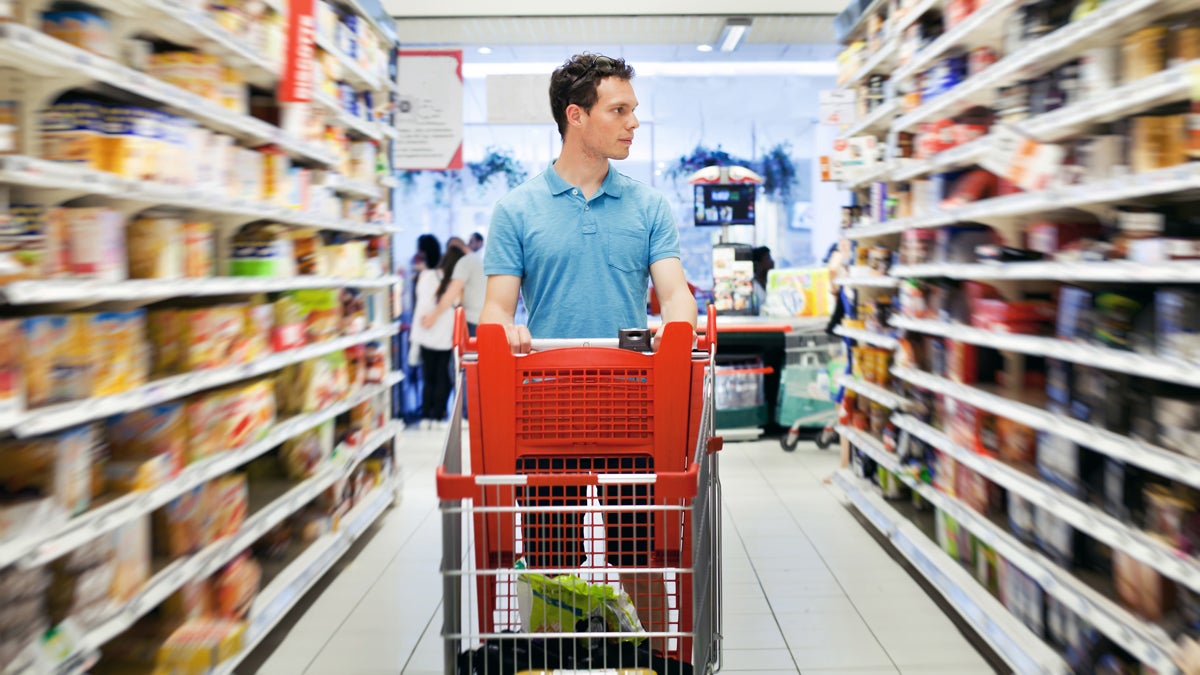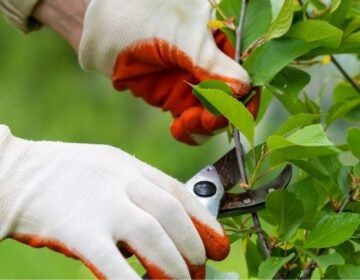Why are there 57 varieties of everything?

(Grocery store image courtesy of Shutterstock.com)
These days, there are more choices than ever, and it’s both wonderful and exhausting. We’re modern. We’re hip. So we threw away our paper grocery list and downloaded the Wegman’s shopping list app for our phone, which promised to save us time at the store. But when we carefully typed in “bread” to add it to our virtual list, we had to choose among 518 products.
Sometimes we’re paralyzed by the myriad of choices in modern life. We stand before the drugstore’s shampoo display frozen with indecision. Do we have fine hair or limp hair? Do we need “Truly Relaxed” or “Curl Control”? Some days, we’re just glad to wake up and find that we still have hair. Maybe we should go with the “Age Defy,” which promises to “turn back the strands of time.”
The supermarket is equally confounding. To buy chicken broth, we have to weigh the relative evils of fat, salt, chemicals and caged-up chickens. We have to debate the merits of tried and true vs. something new. Sometimes that’s not too hard: The brand-new, brown-rice Triscuits baked with red beans don’t even tempt us.
These days, there are more choices than ever, and it’s both wonderful and exhausting. We’re modern. We’re hip. So we threw away our paper grocery list and downloaded the Wegman’s shopping list app for our phone, which promised to save us time at the store. But when we carefully typed in “bread” to add it to our virtual list, we had to choose among 518 products — from “Stroehmann Bread, White, King Size” to “Organic Wheat Bread, unsliced.” Putting plain old “bread,” without adjectives, on our digital list was not an option. While an app might save us some time at the store, we spent 35 minutes trying to compose our shopping list.
We remember newspaper stories about Russian immigrants who came to the United States in the 1980s and encountered their first supermarket. They were awed and confused by the sheer abundance of consumer goods. They were used to standing in line for a single loaf of bread. We know how they felt.
Too much choice
It’s no surprise that supermarkets are now the size of airplane hangars. They need to be supersized to accommodate the 518 types of breads, 396 herbal teas, and 36 cinnamon-flavored cereals that they stock. The granola bar aisle is three miles long.
When we were young, it seemed like there were fewer choices. Watching TV meant getting up from the sofa and walking over to the set to turn the dial from ABC to CBS to NBC. Three channels, not 300. Buying sneakers meant choosing between Keds and Converse. Coffee was instant or perked. Jeans came in bell-bottom or straight leg.
Now we can’t buy sneakers until we decide if we are going to use them for tennis, running or walking. Thank goodness there are cross-trainers for the indecisive. Buying a cup of coffee requires weighing the merits of venti vs. grande, cream vs. nonfat soy, and fair trade vs. exploitation. Shopping for jeans demands self-assessment: How do we know if we would look better in high-waisted, hip-hugging or low-rise jeans? We need to decide if our body type is shaped like a pear, apple or banana. At least we’re not an ugli fruit.
It’s even hard to relax when we’re out to dinner. The first thing the waiter asks is “Sparking water or still?” Then, “Would you like to hear about our specials?” Don’t ask; just tell. Bring us the tap water.
“Small plates” at restaurants were once a novelty. We think the idea has gotten stale; it presents another set of problems to those of us who like an appetizer, entrée and dessert. When the waiter suggests ordering four dishes per person, is he thinking about our stomach or increasing our bill so his 18 percent is larger? How many small plates equal one conventional entrée? When my “small plate” of mushroom ravioli arrives at the table and only has two squares, do I really have to share it?
A little variety is a good thing
Don’t get us wrong. We appreciate having a lot of choices — when they’re good ones. As anyone who has ordered something online knows, “customers who bought this item also bought …” is not usually accurate. Just because I read “Anne Frank: The Diary of a Young Girl” doesn’t mean I’m interested in “The Vampire Diaries.”
All these choices can be exhausting. Sometimes it’s a relief to have someone else make the small decisions — pick the movie or buy the wine — especially when we’re confronted with so many “new & improved” versions of our old favorites.
We enjoy shiny packages and clever advertising, but we’re suspicious that printing “new and improved” on the box necessarily make it so. That’s why we were pleased that some manufacturers have reintroduced “classic” versions of their products.
Kellogg’s Corn Flakes is with us on this one. Invented in 1894, the recipe for Corn Flakes has remained almost unchanged for more than 100 years. You will not find a box of “diet” Corn Flakes or “fruitylicious” Corn Flakes. The plain, unadorned version is still popular, and its box proudly brags, “The Original & Best.”
Maybe that’s why we still eat Corn Flakes. We’d like to think we’re original and the best, too.
—
Joyce Eisenberg and Ellen Scolnic, also known as The Word Mavens, are the authors of the “Dictionary of Jewish Words.” They can be reached at www.thewordmavens.com.
WHYY is your source for fact-based, in-depth journalism and information. As a nonprofit organization, we rely on financial support from readers like you. Please give today.





